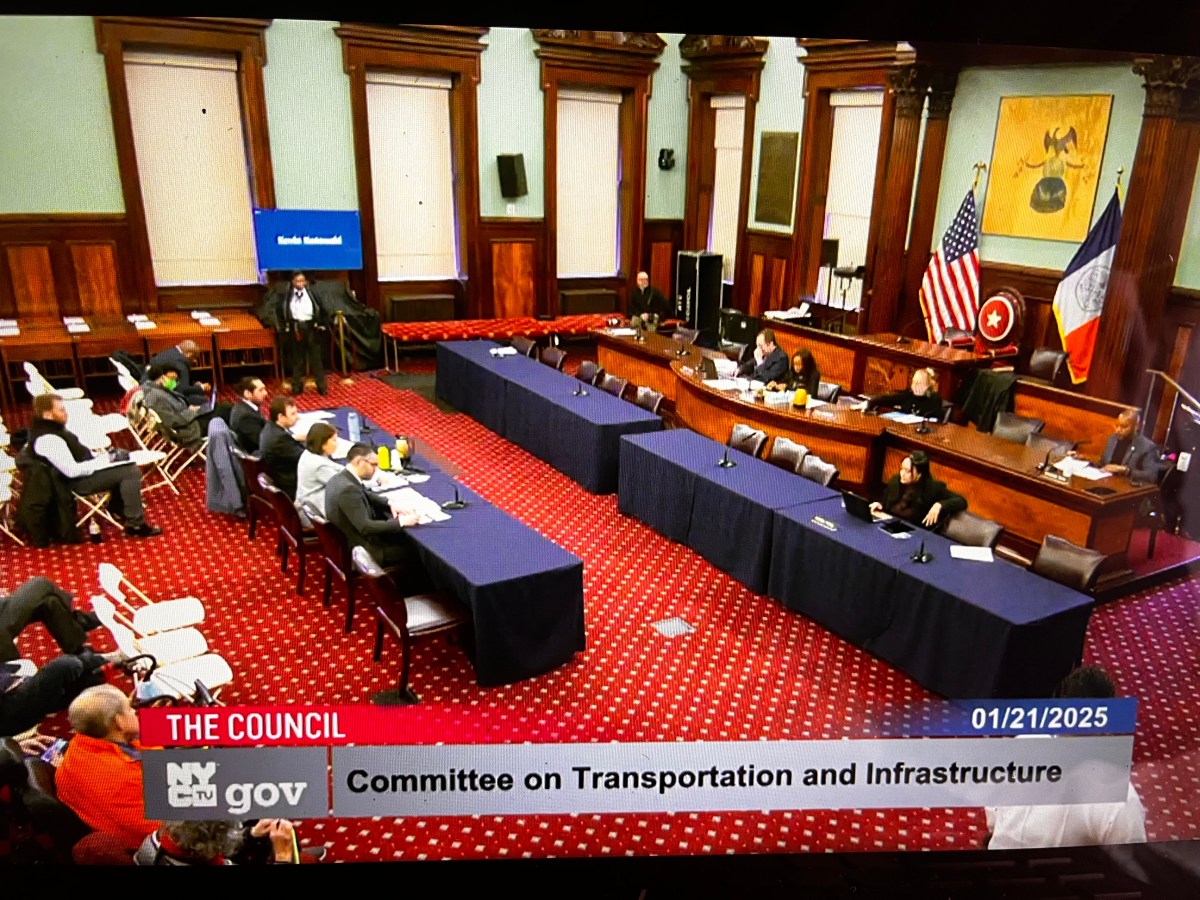New York City Transit president Andy Byford promised a full investigation into the cause of a cascade of delays that constituted a full subway meltdown on Tuesday morning, wreaking havoc on commutes across at least five subway lines.
“Today is kind of typical of this, performance is nowhere near good enough. We are still struggling with far too many interruptions to service in particular,” Byford said at a Tuesday committee meeting, telling reporters afterward that “days like this morning drive me crazy.”
As workers returned from a long, holiday weekend, signal problems at the Fifth Avenue-59th Street and Queens Plaza stations crippled commutes beginning at 7:30 a.m., with widespread delays plaguing E, F, N, Q, R and W trains for the next five hours.
Photos on social media showed commuters packed onto every inch of subway platforms in Astoria and a long line of riders wrapped around a block, waiting for alternative bus service.
How is your morning commute? Mine requires a 2-part video of a line to board a bus that won't come when all of the subways are down. #MTAFail #MTA #Astoria pic.twitter.com/7leO8rjorF
— Joshua A Bruner (@JoshuaABruner) February 20, 2018
After 30 mins of being stuck, @MTA now wants us to walk 4 blocks to all take the 7 train – now the only option to get into Manhattan. We can’t even get down the stairs. Nightmare. pic.twitter.com/zrYqhHCXXp
— Devika Krishna Kumar (@Devikakrishnak) February 20, 2018
Byford, the newly minted head of the MTA’s Transit branch, which oversees subway, bus and paratransit service, defended the measures the MTA is taking to improve service. But he also pledged to look at making a complete overhaul to how Transit operates and criticized the long-held belief among Gov. Andrew Cuomo and MTA brass that “overcrowding” was a main cause of train delays.
While there were a “number of factors” at play in Tuesday morning’s meltdown, Byford pointed to what he believed to be a main issue: four successive signals went out near the Fifth Avenue-59th Street station in Manhattan. Without the signals’ guidance, the MTA was forced to implement safety rules that required it to move trains much more slowly through the area.
Tuesday’s issues, combined with middling performance metrics in recent months, led MTA board member Carl Weisbrod to question whether the agency must adjust its Subway Action Plan, the $836 million strategy that chairman Joe Lhota unveiled last summer to improve service.
The plan, while already being applied, remains in funding limbo as Mayor Bill de Blasio and Cuomo argue over pumping more money into the MTA for the program.
“Essentially, the needle hasn’t moved at all,” Weisbrod said to Byford at Tuesday’s meeting, regarding subway service. “Does the Subway Action Plan itself need tweaking given the fact that we’re now roughly seven months into it and, in terms of the output, there doesn’t seem to be yet any change?”
After 30 mins of being stuck, @MTA now wants us to walk 4 blocks to all take the 7 train – now the only option to get into Manhattan. We can’t even get down the stairs. Nightmare. pic.twitter.com/zrYqhHCXXp
— Devika Krishna Kumar (@Devikakrishnak) February 20, 2018
What is the excuse now MTA? this is the mess in astoria pic.twitter.com/YtzNuMdsaZ
— nataly (@nataliy150) February 20, 2018
Byford defended the plan, crafted before his arrival, as one that addresses the “right things.” It relies on the hiring of thousands of new workers to tackle core subway components: track and signal maintenance, car reliability, subway safety and cleanliness, and customer communication.
“To a certain extent, there was always going to be a lag between undertaking this work, a lot of which is unseen, and seeing the improvement in performance,” said Byford. “Without question, absolutely [the work] will come good. As I’ve previously said, had this plan not been here when I got here, I would have instituted such a plan. Because the critical thing about improving service on any transit system is understanding the underlying route cause over what is causing delay.”
To that end, Byford did buck from MTA tradition. He called “overcrowding,” a delay category that officials have for years pointed to as the leading cause of poor subway service, “not particularly meaningful” because it obscures the root of what went wrong. Essentially, overcrowding is a symptom, not a cause, of the subways’ decline.
“It’s important if we’re to truly improve service that we offer, you have to get to the underlying root cause,” Byford said. “So therefore I don’t want to see overcrowding. I want to see what caused that overcrowding. What is the absolute root cause? So we’re dissecting all of that. We’re re-looking at how we categorize delays.”






































